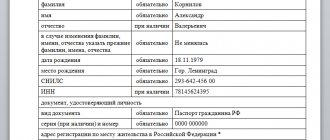Personal bankruptcy often involves expenses beyond what debtors must pay to creditors. Such expenses can be foreseen, but their exact amount can be difficult to determine. That is why, before resorting to bankruptcy proceedings, it is necessary to determine all the consequences of such a responsible step and how this could turn out for the debtor. It is clear that the debtor will lose his property, but even after he does this, he will need to pay the so-called current expenses. Therefore, we will figure out what exactly is called current payments in bankruptcy and what terrible things can happen if current payments are not repaid.
What are current payments in bankruptcy?
Current payments in bankruptcy cases of individuals or legal entities are the financial obligations of the bankrupt that appeared after the receipt of the application for bankruptcy status. That is, current debt refers to expenses that appear regardless of whether a person is considered bankrupt or not. The debtor also has registered debts, which are included in the register in advance as soon as a bankruptcy case is opened.
The problem is that most of the events that are carried out during bankruptcy are aimed solely at paying off registry expenses. But bankrupts still have the problem of paying off current expenses, because no one intends to write them off. As a result, the amount of debt increases and requires repayment. Among the most frequently appearing expense items are:
- Severance payments to employees of a company that has found itself in a difficult situation and has begun bankruptcy proceedings;
- Salaries of employees who work in a bankrupt company or for an individual entrepreneur;
- Compensation payments to employees who unexpectedly lost their jobs (especially if a contract was signed with them for several years of cooperation) if the enterprise or company was liquidated due to bankruptcy;
- Various fines and penalties imposed on the bankrupt;
- Liabilities to the tax authorities, previously suspended due to the bankruptcy procedure;
- Payment for services provided to a bankrupt company or person, especially if they are specified in the contract;
- Payments for goods, if they were provided before the bankruptcy process;
- Payment of rent, if a person or company rented real estate, etc.;
- Any fines, penalties and penalties that arise are also paid;
- Interest on the use of borrowed (credit) funds from financial obligations that appeared after the commencement of the bankruptcy case;
- Compensation for losses arising due to poor performance of one’s duties, etc.
In addition to the rather impressive list presented above, the alleged bankrupt must pay all legal costs. Therefore, the list is supplemented by the consulting services of notaries and lawyers, as well as their work if the specialists provided other types of professional support to the client. That is, current payments include those that were formed after the bankruptcy procedure began, or those related to agreements signed before the bankruptcy began.
The difference between current payments and registered ones
After the start of the case for obtaining the status of a bankrupt person, all detected and appeared payments can be divided into two groups:
- The first group includes registered payments, which are entered into a special register (hence the name) and are carried out in a certain order;
- The second group includes current requirements in bankruptcy cases.
In addition, users are often interested not only in what current payments are, but also how to distinguish them from registered ones, because the peculiarity of current payments is their prevailing nature.
The situation is quite simple to explain. The fact is that bankruptcy is filed if a person or organization cannot cope with the debts that have arisen and they accumulate over some time. The debtor will no longer be able to deal with them on his own. In this case, he may begin bankruptcy proceedings. As soon as the procedure starts working, all registered debts stop accumulating and are frozen. And creditors must include the fixed amounts in the register, otherwise they will not be repaid or will take last place in the queue. This automatically means: it is not a fact that the money received from the debtor’s property will be enough to cover them.
However, it often takes several years to obtain a bankruptcy certificate. This is a complex and multi-step process. Naturally, during this time, new financial expenses may arise that need to be covered somehow. As already mentioned, this could be salaries for employees, business expenses, etc. It doesn’t matter whether we are talking about individuals or legal entities.
Since these payments arrive regularly and do not stop, they are called current. Such debts must be repaid first. But such an approach can be perceived incorrectly as a screen for evading registered debts.
The size of debts for current payments cannot be foreseen or planned, since many parameters that are difficult to predict must be taken into account. In addition, before a person is declared bankrupt, most likely he will be forced to undergo the procedure of reorganization or external administration (or perhaps both). And organizing production activities is always associated with costs that may not be justified. As a result, registered creditors will have to wait until current debts are paid. Thus, registry and current payments during bankruptcy are interrelated, but current payments are still much more priority, since if the debtor can reach a normal financial level, he may be able to pay the debts included in the registry.
Categories
In bankruptcy, register payments are not the only type of financial obligation that is mandatory for the debtor. The current types of payments are considered priority. They are divided into two categories:
- Obligations initiated before the commencement of bankruptcy proceedings, but the fulfillment of which began after bankruptcy proceedings began. The parties to an agreement concluded under such circumstances could not foresee the critical situation that provoked financial difficulties.
- Obligations to creditors, agreements with which were signed before filing for bankruptcy, but came into force after the person became involved in the case.
Such cases relate to current payments because they could not be foreseen or they accompany the stabilization of the debtor’s financial situation. But payments of the current type have a preferential registration procedure, thanks to which the claims of creditors are not entered into the general register. They will be activated separately, and earlier than payments to other creditors.
True, creditors for current payments cannot be recognized participants in the case and cannot influence the process of declaring a person bankrupt and the competitive sale of property. But such requirements are fulfilled first and foremost as soon as they appear.
Consequences of declaring a transaction invalid
If the court declares the settlement transaction invalid, all transferred property and money must be returned to the bankruptcy estate. Moreover, if it was not cash that was transferred, and the property no longer exists, its actual value at the time of transfer must be returned, as well as all losses compensated.
In fact, the creditor whose claims were satisfied in violation of the law must return the funds to the bankruptcy estate. At the same time, he acquires the opportunity to collect this money from the debtor. Settlements with such a creditor can occur in different ways:
- If a transaction carried out after the start of the procedure or a month before the application was accepted is cancelled, the creditor’s claims will be satisfied in accordance with the general procedure. The requirements are included in the register, and the manager makes payments in order.
- If the operation is canceled on the basis of clause 3 of Art. 61.3 Federal Law No. 127-FZ dated October 26, 2002, the creditor will be able to count on payments only after settlements with the third priority of creditors. In most cases, this means that getting a refund will be almost impossible. By the time the third stage of creditors are paid, most debtors have nothing left.
All consequences of declaring a transaction invalid are described in Art. 61.6. Federal Law No. 127-FZ dated October 26, 2002. It also sets out the procedure for settlements with such creditors.
Governing legislation
Issues related to the collection of current payments in bankruptcy proceedings are resolved by the arbitration court, which is guided not by personal needs or preferences, but by the basis of laws that provide for the process of creating a register of current payments in bankruptcy. production. This bankruptcy law is Federal Law No. 127. Despite the fact that it was adopted back in 2002, thanks to amendments made in 2015, it still remains relevant.
Let's consider the main points of the Federal Law on bankruptcy, which will help you understand the main nuances of how to get into the register of current payments:
- The first paragraph of the fifth article helps to understand the concept of payments and the principle of their creation;
- The second and third paragraphs of the article talk about the claims of creditors that appeared after the end of the trial on the debtor’s insolvency. Specifically, such claims cannot be included in the register, since they appear after the court has made a decision (for example, about the bankruptcy of a developer). But this does not mean that such demands will not be satisfied. It's just that their order shifts a little;
- Article 96 talks about a moratorium, which may apply to certain types of payments. But it can be removed as soon as the trial is over;
- Paragraph one of Article 134 says that it is possible to make current payments and put them in the register. This directly determines who will receive the money first. For example, the first to receive financial compensation will be the creditors whose information was entered first even before the court hearings began;
- The third paragraph talks about complaints against financial authorities if they go to court. Often such complaints are received if a specialist is inactive or poorly performs his professional duties. Sometimes, thanks to complaints, the court changes the order of creditors;
- If the amount of claims is greater than provided for by labor legislation, you can read more about this problem in paragraph 2.1. These claims will be considered current, but their repayment will be carried out in the third stage.
As is clear from the above, many requirements directly depend on the professionalism and responsibility of the manager. This affects how fully court decisions will be implemented and whether all creditors will receive compensation.
If suspicions arise about dishonest work or negligence, then a complaint against the manager can be sent to the arbitration court, at the plenum of which it will be considered. In addition, such a complaint must be sent to the managers themselves.
Powers of the bailiff during bankruptcy proceedings
The bailiff's obligation to terminate enforcement proceedings applies only to registered monetary claims, but does not affect current obligations (clause 4 of Article 96 No. 229-FZ). For current obligations, enforcement proceedings are carried out as usual, with some exceptions:
- the bailiff has no right to foreclose on the debtor’s property, with the exception of money in a bank account;
- The bailiff is obliged to adhere to the order of execution of current requirements specified in paragraph 2 of Art. 134 of the bankruptcy law, with the exception of the fulfillment of obligations secured by a pledge (clause 19 of the resolution of the plenum No. 58).
Given the reduction in enforcement powers, presenting the document directly to the bank seems preferable.
Collection procedure
Let's consider the question of how current payments will be collected in bankruptcy. The algorithm for this procedure is multi-stage, but it can be completed without unnecessary problems. So, the debtor is expected to do the following:
- Compose and submit a petition (in written format). It must be sent to the address of the debtor or financial manager. But the text needs to mention what kind of debt we are talking about: the one that arose after the end of the bankruptcy case, or the one that arose after the filing of the claim. This will determine how current payments are collected in bankruptcy. Sometimes it is enough to simply file a complaint with the financial authorities, but if he is negligent in his duties, there is no way out of filing a lawsuit;
- Additional payments are indicated in a separate register of the manager, after which an invoice is sent to the bank to write off the required amount of money;
- If the financial authority refuses to fulfill financial obligations, the collection procedure involves filing a statement of claim in court, which requires recognition of the payment as current and its reimbursement. As evidence, you can attach documents confirming the current status of the payment;
- If the claim is accepted, the court will begin the process of determining whether the payment is in fact current. Typically, such payments are added to one queue or entered into an additional, extraordinary register. Extraordinary payments are paid in order, having a fixed date.
The financial authority must comply with the court decision. If he ignores it, penalties and fines will be imposed on him. Also, the manager’s inaction may be regarded as causing damage. There are cases when the request is not granted. Then you can demand clarification of the situation by submitting a written application. If the answer contains little clarification or does not come at all, you can file an appeal against the issue.
You need to know for sure what documents will be needed when applying to the judicial authorities. For example, you will definitely need:
- Passport of the person filing the claim;
- Direct claim;
- Evidence of non-payment of mandatory payments;
- Checks;
- Papers confirming bankruptcy.
Payments are made in a separate case parallel to the bankruptcy case. Debt compensation is carried out in several steps:
- First of all, legal costs and financial services fees are compensated.
- Secondly, severance pay is reimbursed to employees of bankrupt enterprises.
- Next, they pay for utilities, rent, taxes, fines, etc.
After all the listed payments are compensated, the remaining debts will be compensated.
Deadlines for collection of current payments
Collection of current payments in bankruptcy is carried out within a certain period in accordance with the court decision. Initially, the competitive terms of the current debt are observed. Only after the money from the sale of the debtor's property is received into the account are other debts paid.
The terms for current debt can be extended, but only after agreeing on this issue with the arbitration manager. In this case, the deadline is set individually. True, there is a nuance regarding the amount above the minimum threshold established by law: it is paid in the third stage. There are no more precise dates, since payments are made according to the queue.
In what order should payments be made?
Bankruptcy payment queues are drawn up after creditors submit a corresponding application for debt payment. During the consideration of documents on recognition of insolvency, a certain queue is created, according to which the citizen makes payments. Collection of mandatory payments in bankruptcy proceedings occurs as follows:
- Alimony payments, legal costs are paid, the salary of the financial manager is paid (for 1 procedure you have to pay 25,000 rubles). The priority list also includes payment for all documents, state fees, and payment for the services of specialists (notary, lawyer).
- The next collection of funds occurs to pay wages to all production employees who were dismissed after being declared financially insolvent. Transfers are also made to those who remain to work in production.
- The last payments in the bankruptcy queue are utility bills, rental agreements, and payments for repairs.
All other debts are compensated after payment of current ones, in the established order.
Also, the requirements for current bankruptcy payments include payments in full for all existing costs that resulted from the fault of the insolvent person or enterprise. In situations where current payments in bankruptcy proceedings are not paid, creditors have the right to send a complaint to the arbitration court, which may decide to pay compensation.






